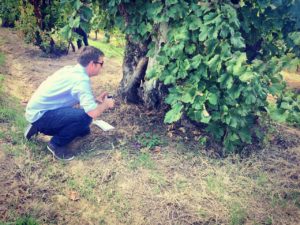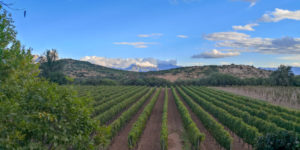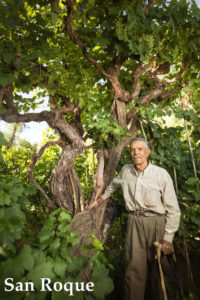BOLIVIAN WINES
South America’s secret treasure
Until very recently I had no idea that Bolivia was a wine-producing country; too close to the equator and therefore surely too hot I assumed! Then, over Easter this year, I had the amazing opportunity to visit its different wine regions – and I was seriously surprised at this little known country’s exciting wines!
But we have so many interesting wine regions on our doorstep here in Europe I hear you say. Why should we take any interest in far-off Bolivia?
Wine in the morning – coffee in the afternoon
For a start, Bolivia is the only wine region in the world where you can visit a good quality vineyard in the morning and a coffee plantation in the afternoon! The country has 4 wine regions, and its most northerly – Samaipata – is not only on the border of the Amazon rainforest, but also on the very edge of cool climate seasonality. Any further north than this and the climate becomes tropical, with temperatures too warm all year round to grow grapes, whereas coffee beans thrive.
Bolivia has some of the highest altitude vineyards in the world! Her biggest and best wine region, the “Central Valley”, lies in the “foothills” of the Andes around the town of Tarija in the south of the country, at altitudes between 1600 – 2250mts. Only Salta, roughly 300kms south and just across the border into Argentina, has higher vineyards than this anywhere else in the world. These high altitude vineyards are essential at this latitude – Tarija lies just south of the Tropic of Capricorn – because the nights are cool and daytime temperatures rarely rise above 35C. They produce red wines with powerful aromatics and immense fruit concentration, combined with a welcoming freshness.
Old, old vines
Bolivian wine has a rich and fascinating history dating back to the early Spanish settlers, who planted vines around the wealthy silver-mining city of Potosi back in the mid 16th Century. The result of this is that Bolivia has some of – if not the – oldest vines in the world which are still used for wine production. The highlight is the San Roque vineyard in the Los Cintis Valley at around 3,000mts, where magnificent 250 year old Criolla and Moscatel vines grow, intertwined with pepper trees which provide protection against disease and the elements. And there are many more vineyards with old vines over 100 years of age…
Food and Wine
Bolivian cuisine is a fascinating mix of Argentinean-style grilled meats mixed with spicy flavours from Asia and Spain. Whilst Peru is a Pescatarian’s paradise, Bolivia is a carnivore’s dream. The big flavours of the food are the perfect companion to the country’s rich, powerful, fruit-packed reds. We tasted many excellent red wines on our visit – many at remarkably cheap prices – but it was not clear that there is one single grape variety which will be Bolivia’s star in the future. I much enjoyed Syrah, Malbec, Tannat, Tempranillo and Petit Verdot based reds from different producers and suspect that each of these has excellent potential here. Even white wines showed real potential here – my favourite came from the impressive Kohlberg winery from 40 year old Ugni Blanc vines picked in the cool of night, with good freshness, depth of flavour and minerality.
Last but not least, Bolivia has without doubt the warmest, friendliest, most family-orientated wine producers I have had the pleasure to meet anywhere in the world! Their positive attitude combined with an eager-to-learn younger generation of winemakers who have trained in some of the top wine universities of the Americas will surely drive this little-known country to deserved success and recognition on the world wine stage in the near future.
Tips (please note that these wines are not yet available in Switzerland)
Kohlberg Stelar Ugni Blanc 2017, Tarija, at US$7/bt
Aranquez Origin Tannat 2015, Tarija, at US$20/bt approx
Campos Esther Ortiz Petit Verdot 2016, Tarija, at US$40/bt






